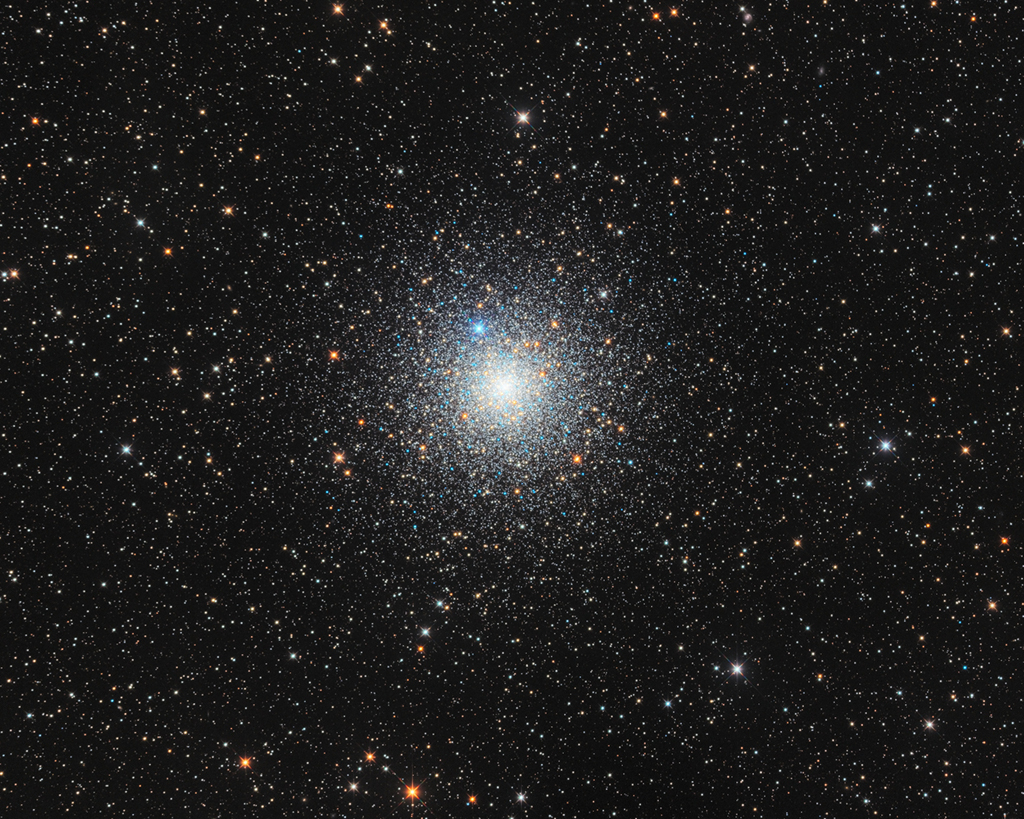2020 January 23
Globular Star Cluster NGC 6752
Image Credit & Copyright: Jose Joaquin Perez
Explanation: Some 13,000 light-years away toward the southern constellation Pavo, the globular star cluster NGC 6752 roams the halo of our Milky Way galaxy. Over 10 billion years old, NGC 6752 follows clusters Omega Centauri and 47 Tucanae as the third brightest globular in planet Earth’s night sky. It holds over 100 thousand stars in a sphere about 100 light-years in diameter. Telescopic explorations of the NGC 6752 have found that a remarkable fraction of the stars near the cluster’s core, are multiple star systems. They also reveal the presence of blue straggle stars, stars which appear to be too young and massive to exist in a cluster whose stars are all expected to be at least twice as old as the Sun. The blue stragglers are thought to be formed by star mergers and collisions in the dense stellar environment at the cluster’s core. This sharp color composite also features the cluster’s ancient red giant stars in yellowish hues. (Note: The bright, spiky blue star at 11 o’clock from the cluster center is a foreground star along the line-of-sight to NGC 6752)
球状星团NGC 6752
影像来源及版权: Jose Joaquin Perez
说明: 在南天的孔雀座里,距离我们13,000光年的球状星团NGC 6752正游走在银河系晕中。 NGC 6752的年龄超过100亿年,是地球夜空中亮度排名第三的球状星团,仅次于半人马座ω 和 杜鹃座47 。它在100光年直径的球状区域内集中了超过10万颗恒星。对NGC 6752的望远镜观测发现,相当一部分靠近星团中心的恒星为多重星系统。同时还发现了一些蓝离散星,因过于年轻且质量过大而无法在星团中存留——那里恒星的年龄至少是太阳的两倍。蓝离散星 据认为是在星团核心区稠密的星际环境中由恒星合并和碰撞形成的。在这张清晰的彩色合成图中还可以看到黄色调的古老的红巨星。(注:相对中心11点钟方向的明亮尖锐的蓝色恒星是一颗前景星,正好位于NGC 6752的视线方向)



